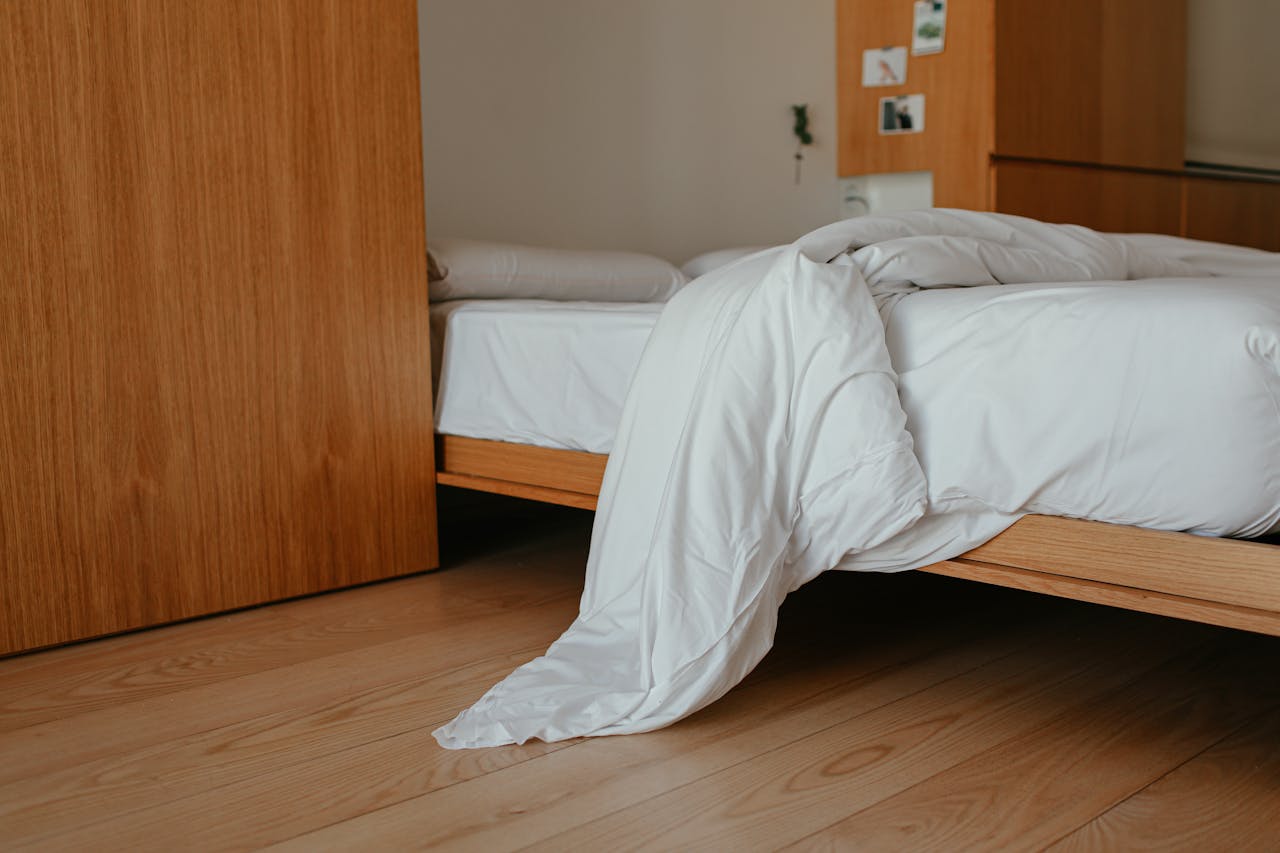It's time to check labels when shopping for a mattress. Hearing phrases such as "pressure relief," "improves sleep quality," or "supports any sleep position" isn't enough. These marketing trigger words may entice you to check out a particular mattress, but don't dive in too soon. First, understand which materials are important in a mattress, so you can discern the features that truly matter.
Latex foam is a component you surely can't miss, as many mattress brands use it. It gets thrown out there with the same level of esteem as memory foam. What you probably know is that latex foam somehow translates to a comfortable mattress. But why? How does latex enhance a mattress? What benefits can you enjoy?
Latex Foam Layers in a Mattress
Let's start by understanding what latex is. It is the milky white liquid produced by certain flowering plants, including the rubber tree. However, there is also a synthetic version of latex, which is commonly used in many products today.
In the context of mattresses, latex refers to the resilient foam derived from a natural or synthetic source. It's produced by whipping the liquid latex into a frothy foam, then molding and curing it, typically through manufacturing processes like Dunlop or Talalay. This results in a material with a characteristic bounce.
Now, many fine qualities attributed to latex foam actually refer to natural latex. The ones made from synthetic materials don't quite offer the same benefits as natural latex, although they may have a similar feel. Here's how they differ:
Dunlop Latex vs. Talalay Latex
Natural latex is derived from the sap of the rubber tree, commonly sourced from the species Hevea brasiliensis. The sap is harvested in a similar method to how maple syrup is tapped, by making a small incision on the tree's bark and allowing the liquid to drip into a container. Then, it's processed either through Dunlop or Talalay.
The Dunlop method is straightforward. After whipping the sap into foam, the material is poured into a mold in a single pour. Then it's baked and washed and baked again to remove moisture. It results in a denser and firmer foam, which is ideal for a support core.
Talalay is more complex. First, after whipping, the foam is partially poured into the mold, then it's vacuum-sealed to allow the material to expand. The next step is flash-freezing to stabilize the foam and give it a more uniform consistency, which contributes to its "springy" feel. Then it's baked, washed, and dried. This results in a lighter, airier, and more breathable foam, ideal for the comfort layer of a hybrid mattress.

The Seven Zone is our natural Talalay latex foam mattress. It is best for those who enjoy gentle, quiet support with a little bit of buoyancy.
Synthetic Latex and Blended Latex
As the name suggests, synthetic latex is a man-made product derived from styrene-butadiene rubber (SBR), a petrochemical. While designed to mimic the performance of latex au naturel, it's an economical alternative and may not offer the same qualities, especially in terms of breathability.
Blended latex is a compromise between natural and synthetic latex. It's partly made with natural materials, so a sleeper can still experience the promising benefits of latex. Meanwhile, the synthetic materials allow it to be more cost-effective and accessible.
The quality and price of a blended latex mattress largely depend on the percentage of natural latex in it. Some claim their latex mattresses contain 95 percent natural materials, with the remaining 5 percent being synthetic additives to enhance stability.
How Latex Enhances Your Mattress
Latex can be used as a comfort layer, especially in a hybrid mattress. As the top layer, it impacts how a sleeper rests, by how it responds to body weight and shape. Ideally, it cradles you with a pressure point relief through a perfect balance of bounce and support.
Dense latex, like the one processed via Dunlop, can serve as the support core of an all-latex mattress. It can also be layered with Talalay to achieve a firmness level that distributes your body weight well for good spinal alignment.
Benefits of Using Latex in Mattresses
The true benefits of the latex layers in your mattress are how they affect your sleep, and these are among them:
Helps Prevent and Reduce Body Pain
Latex foam helps distribute body weight evenly. It conforms to the body's curves and cradles pressure points in the shoulders and hips. This encourages proper spinal alignment during sleep, hence preventing and reducing body pain.
Minimal Motion Transfer
Latex offers a characteristic bounce and resilience that helps absorb motion transfer. This is especially helpful in shared beds to minimize any movement that can disturb the other sleeper.
Lasts Longer Than a Regular Mattress
A high-quality natural latex mattress is incredibly durable. The latex layer is more resilient against body impressions that lead to sagging over time. It can potentially last for more years than a regular foam mattress.
Breathable with Good Air Circulation
Hot sleepers may find comfort in a hybrid mattress, especially with a Talalay latex foam layer. But to experience excellent breathability, it pays to be more discerning and ensure the mattress is made of high-quality materials that are free of harsh chemicals. A synthetic mattress tends to trap body heat because the material is dense, not to mention it may contain VOCs that can affect health.
Drawbacks of a Latex Mattress
While latex offers notable advantages, it's also good to be aware of a few drawbacks.
First, latex is a dense material, which means that latex mattresses or hybrid mattresses with latex layers can be quite heavy.
Another drawback is the cost. The manufacturing process of natural latex is labor-intensive, from harvesting the latex to curing the foam. This means that a high-quality mattress with a latex component often comes with a higher price tag.
Although it is rare, processed latex can still cause allergic reactions in people who are sensitive to the material. The proteins that trigger these reactions are usually removed during processing. However, it is important to remain cautious, especially if you have a known allergy.
Certifications to Look For
When shopping for a hybrid mattress, especially for one with a Talalay latex comfort layer, it's important to check for third-party certifications. These ensure that the material meets specific standards for health and safety:
-
GOLS (Global Organic Latex Standard). This is the highest standard for organically grown and processed latex.
-
OEKO-TEX Standard 100. This certification helps ensure that the textile used in the mattress is free from harmful substances.
-
Greenguard Gold. This label indicates the product has low chemical emissions.
***
A mattress with a latex component could be the upgrade you need. Just make sure you're choosing the right one, with the right certifications, so you can sleep comfortably in body and mind.
Related Posts
- How to Make Your Mattress Last Longer
- Twin, Full, Queen, or King? What Mattress Size Is Best for You?
- How a Good Mattress Impacts Sleep
Featured Photo by Cup of Couple via Pexels



Leave a comment
This site is protected by hCaptcha and the hCaptcha Privacy Policy and Terms of Service apply.